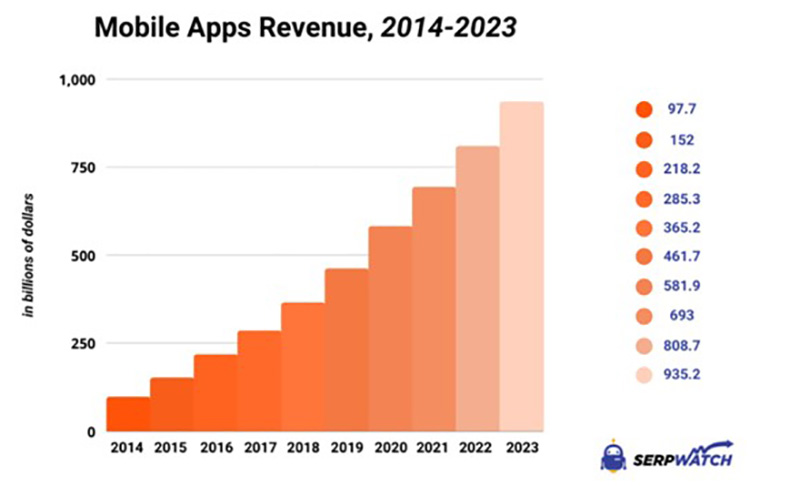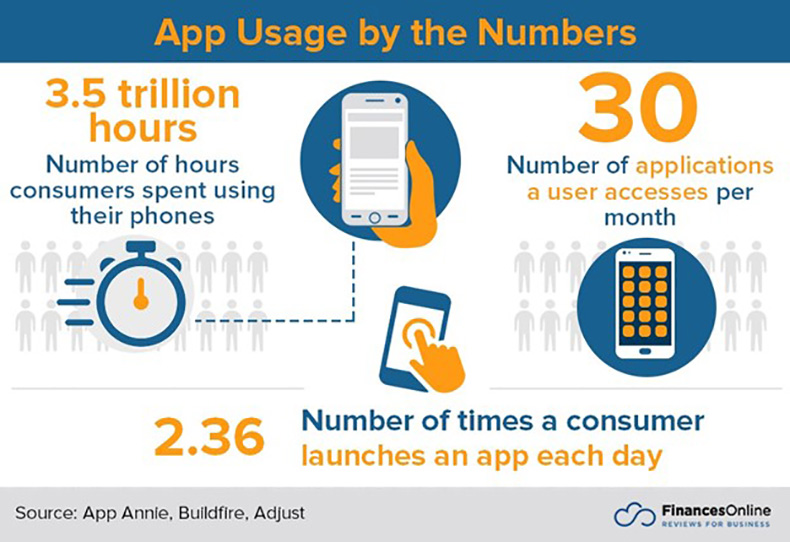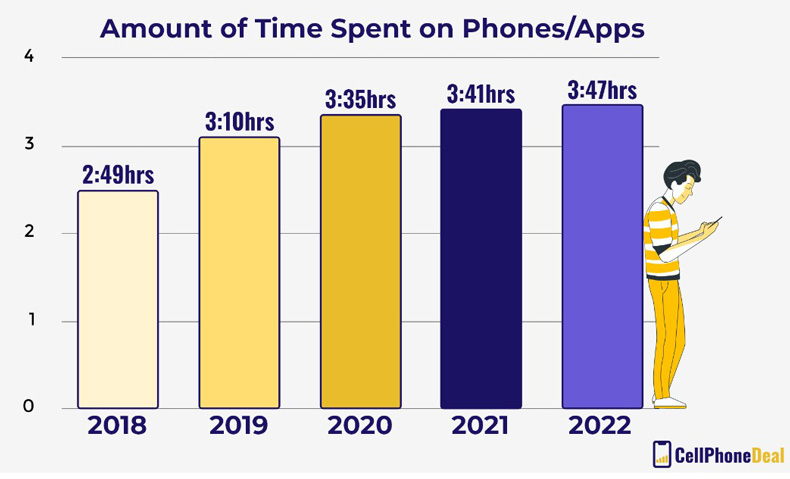Almost everyone uses a mobile app at some point in the day. You may use one to call a taxi or order food, you may use one for directions to a new place, or you may just use one to vanquish aliens from planet Zog.
Mobile apps are very much part of our everyday lives. Over 2.87 million apps are available on the Google Play store alone.

Source: mindsea
It's a lucrative industry, too; in 2020, global revenue from mobile apps was over $318 billion.
How do you ensure your app stands out from the competition and earns you a decent slice of the pie?
Competitive analysis can help make sure you have some of that pie on your plate.
What is competitive analysis?
Competitive analysis refers to the process of identifying your nearest and most direct competitors, then analyzing how they perform so you can see what their app's strengths and weaknesses are. The process is usually carried out using special analysis tools designed for such work.
The outcome of analysis and comparison can inform you whether your app has market viability—whether it will be liked, and thus purchased, by your target customers. For startups or solo entrepreneurs, it can also help when seeking funding for app development and can instill confidence that any investment could result in good ROI.
When should you do competitive analysis?
You should view competitive analysis as a form of market research.
In other words, the first time you carry out competitive analysis is when your app is still at concept stage. Maybe you're brainstorming new app ideas with your team when you suddenly have a lightbulb moment. Is that shopping cart software app idea one that can work? What apps already do the same things you have thought of?
By carrying out analysis at the idea stage, you can get a clear picture of what you need to do in development to match, or ideally surpass, what other apps are already doing.
However, it should not be a one-off task. You should revisit the process at various points during development to ensure you are on the right path, and also when you plan any major updates or changes to a finished app.
How do you carry out competitive analysis for your mobile app?

Source: FinancesOnline
Developers and business owners likely have several app ideas every month. Competitive analysis helps sort the wheat from the chaff and identify the apps that are worth developing and taking to market. Good analysis lets you make good decisions that are based on accurate and up-to-date information.
So, how should you approach competitive analysis?
1. Determine what makes your app stand out
OK, your idea may not be unique, but is it different from the apps of its type that already exist? You should know the answer to the question "How do mobile apps work?", so you should also have an idea of what you want your app to do. Even if there are similar apps on the market, you should have a unique value proposition (UVP)—something that will make your app stand out from the others.
That proposition could cover a number of areas. It could highlight how your app will solve problems or offer new or better benefits. It must be a strong enough proposition that customers will opt for your app over your competitors'.
By identifying and analyzing the strengths and weaknesses of other apps, you can come up with a UVP that puts the spotlight on your app.

Source: CellPhoneDeal
2. Research thoroughly
Let's say, as an example, that you want to develop a project management app. There are many of those on the market already, so you'll want to examine each of them closely. In what ways do they work well? In what ways do they fall short of expectations? Perhaps most important, what do customers think and what are they saying in reviews of the app?
By understanding both the market and the apps you will be competing with, you'll make it easier to develop and market an app that bridges any gaps. That involves not only the performance of the app itself but also benefits/reward schemes, customer service, ways the app is marketed, and the demographics of the app users you are targeting.
3. Enter the matrix
Collecting information about your competition is no use unless you use it properly.
Construct a competitive analysis matrix so you have all that info displayed in an accessible data format, enabling you to easily look at different aspects of their apps, from performance to strategy. Compare it with your own plans and development status.
4. Understand that strategies matter too
Analysis is about much more than technical aspects. Think of an app as a digital product that can be used, sold, and promoted across digital platforms. So your competitive analysis should also track competitors' strategies: what they say on social media, whether they use white-hat link-building, what they put in their blogs and newsletters—anywhere they market or discuss their product.
As with any other product, seeing what works or doesn't work for competitors can help define your own strategy.
5. Check reviews and ratings
Reviews and ratings from customers can be a great signal as to what you need to do with your own app.
Which apps have the largest numbers of downloads? The best star ratings? What are people saying about the app?
By analyzing those factors, you can get an idea of what you have to do in order to make your app better than the competition.
6. Do market research
You should also look at the market for your type of app. Is there demand for a new one, or is the market saturated?
Of course, even when there are similar apps, you can look at how to improve on them or offer extra benefits to make yours stand out. Knowing your customers and the industry are two major steps to success.
* * *
The marketing may be crowded, but there is always room for new apps that perform better than current offerings. Competitive analysis is not about copying what already exists but identifying ways of making your app stand out and be better than your competitors.
All results from any competitive analysis should help with both your business plan and your development plan. It lets you see where you can position yourself when launching your product, and it should be a process that you should revisit throughout the development stages of your app.
More Resources on Mobile Apps and Competitive Analysis
Why B2B Apps Need App Store Optimization Now More Than Ever
The Mobile Opportunity: Recognizing the Power of Apps and the Mobile Web
Knowing How Your Competitors Are Positioned: The Key to Competitive Intelligence




